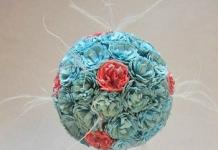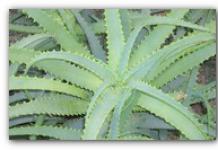Do you want to have magic at home? Then Anthurium, the flower of family happiness and love, comes to you. Anthurium is a male plant male happiness as the people called him. In addition to the official name Anthurium, it is also called the Flamingo Flower. Look at the photo of flamingos. This exquisite bird looks like a flower petal (veil). The color of the bedspread depends on the type of plant.
Really looks like a flamingo, doesn't it?
There are a lot of varieties of Anthurium (they number up to 1000). To make caring for Anthurium at home easy, it is better to focus on the following types:
One of the most beautiful flowers. The leaves are heart-shaped, velvety, dark green or purple with light veins that shimmer in the light with a crystal sheen. The cob is purple with a purple veil. He came to us from Panama.

Its dark green matte leaves are oblong and have small black spots. A yellow, orange or red cob wraps a veil of the corresponding shade. He hails from Costa Rica.

Anthurium Baker. It has dense leaves with reddish-brown dots. The bedspread has a leathery appearance, its color is pale green-yellow with a beautiful purple lining. Cream on the cob. His homeland is Guatemala.

It has such a name because of the unusual shape of the leaves of a dissected shape with a wavy edge. Cream-colored bedspread with green-beige cob. This flower was born in northern Peru.

This plant has heart-shaped, glossy green leaves. The bedspread is distinguished by a bumpy white or red hue with a cream or red cob. This indoor Anthurium comes from Ecuador.

Anthurium blooms all year round, its flowers can retain their original appearance for 2 months, and cut flowers can be fragrant in water for up to 4 weeks. The unique aroma of Anthurium can change during the day, and apparently depends on the mood of the flower. If you take care of him properly, his “mood” will be excellent all year round.
The soil
Freshly bought Anthurium is needed immediately transplant into prepared soil. And this is not an ordinary land, but a special substrate. To grow it properly, use the following recipes:
- Peat, chopped moss and sod land (proportion 2:2:1)
- Deciduous land (humus), chopped marsh moss and turf (proportion 2:1:1)
- Pumice pieces 1-3cm, particles of pine bark 2-5cm in size, peat and horse manure (proportion 2:2:1:1)
- Large expanded clay, peat and pine bark in pieces 2-3cm (proportion 1:1:1)

Substrate for plant transplantation.
Bone meal, moss, charcoal, wood chips can be added to the prepared substrates. But do not rush to fill everything in pots.
For capricious Anthurium, plastic pots are needed, shallow and wide.
Successful cultivation of the flower is possible only with good drainage, as it absorbs excess water and does not allow the roots to rot. It can be a mixture of sand, charcoal and bark of coniferous plants. Lay it on the bottom of the pot and fill it with a substrate.
fertilizers
Fertilize from March to September once in two weeks. It is not necessary to fertilize in winter. To do this, use a mixture of humus and cow dung. Or buy fertilizer (but halve the dose according to the instructions). You can also water the flower once a week with infusion of chicken manure.
“I feed it with iron (Ferrovit) and Kemira Lux,” our reader writes her reviews, “there are no pests at all, only a scab, which I got rid of by Aktara. My beauties delight me with flowering all year round!
Temperature
You can successfully grow a flower at t 20-28 ° C in summer and in winter at t 18-20 ° C. Protect the plant from drafts and hot batteries.
 - a home healer on your windowsill. Which species are medicinal, and which are just decorative? How to grow and propagate it correctly?
- a home healer on your windowsill. Which species are medicinal, and which are just decorative? How to grow and propagate it correctly?
If there is a monstera in your house, you will probably be interested in how to properly care for it so that it always has an elegant look. Read more about it.
By the way: if you offer Anthurium a dormant period from September to January (keep at t 15-16 ° C and limit watering), then it will bloom more actively. In January, gradually increase t to 20-25 ° C, and then the plant will bloom earlier.
With a long drop in temperature, it does not bloom at all.
Watering
need watering moderate and regular. Make sure that the soil does not dry out completely, you need to water when the top of the soil has time to dry out.
- In summer, water the flower every 3-4 days.
- In winter once a week
Need water boil and stand. Indoor Anthurium loves water, so wipe its leaves with a damp sponge. But don't touch the branches! Water stains may remain on them. After watering, remove excess water from the pan.

This is what the seeds of this flower look like.
Lighting
Plant loves penumbra so try to keep it out of direct sunlight. The best place for a flower is windows located in the east and northwest. On the north window, he will also survive, but will not bloom. If there is not enough light for him, Anthurium does not bloom, and its leaves are deformed.
 Lovers of coniferous plants have long appreciated the excellent qualities - it easily tolerates a haircut, is not too whimsical, has many decorative varieties that delight the eye even in the harshest winters.
Lovers of coniferous plants have long appreciated the excellent qualities - it easily tolerates a haircut, is not too whimsical, has many decorative varieties that delight the eye even in the harshest winters.
Do you want to have a constantly fresh fragrant bouquet at home? Plant an azalea at home!
Transfer
Anthurium transplant in progress February to August. Just be careful - the leaves and roots are fragile. Young Anthurium needs to be transplanted annually, as soon as the pot becomes small for him. And older plants every 3-4 years. Always update the soil and compact with this procedure.
Video
Why can not anthurium be transplanted into too large a pot? How to spray a plant?
reproduction
Reproduction of Anthurium occurs in three ways:

Amicable shoots appeared from the sown seeds.
- Division. In late spring, carefully separate a few side shoots from the mother stem, transplant them into a separate pot.
- Cuttings. It is necessary to cut off part of the stem with roots, cut the lower one into pieces 5-10 cm and land in a small bowl under glass. After 2-3 weeks, fresh roots will appear. We transplant them into the ground.
- The flower propagates by pollination (apply pollen from one flower to another with a soft brush). This must be done for several days. In a year there will be berries with seeds. Remove the seeds and immerse for 2 hours in a weak solution of manganese. To grow them, place the seeds in a bowl on top of a damp foam sponge and cover with glass. After two weeks, they can be transferred to a container with a substrate. Sprouted seeds still need to be transplanted 2-3 times. When the sprouts reach 7 cm, plant them in pots. The first flowering will be after 4 years.
“Together with my daughter, we propagated Anthurium artificially. We wielded a soft brush and chose bigger flowers, - our reader writes to us, - and soon we were picking beautiful burgundy berries. I immediately warned my daughter to be careful, because Anthurium juice is poisonous and can cause allergies, so she worked with gloves. After washing, we put the seeds in moss and a plastic bag. Our seeds germinated after 3 months and we transplanted them into a pot. Now we already have three Anthuriums!”
Possible problems

Anthracnose on the leaf, it's time to apply fungicides.
If you notice:
- yellow spots on wrinkled leaves. Aphid tried here. Apply tobacco infusion to the affected areas
- sticky discharge on the leaves, this is the case of scale insects. Treat the leaves with karbofos. Karbofos also helps to destroy mealybugs (they are clearly visible on all parts of the plant)
- Leaves turn yellow and curl- too dry air, draft or direct sunlight
- Leaves dry at the edges is the result of Anthracnose disease. This requires systemic fungicide treatment.
“I was very upset when I saw dried leaves on one of the flowers! I have two Anthuriums and everything was fine with the second one. I did not understand what was the matter when my grandfather came to the rescue. He began to put the used tea bags in the pot. And what do you think? Somewhere in a month, my Anthurium came to life! - our reader writes to us.
We carefully store all the reviews, by the way, much of this article is written on the basis of letters in which our readers tell us about caring for this delicate, exotic plant!

For a long time it seemed to me that Anthurium was something not alive, from a series of plastic flowers, since its scarlet buds with yellow pistils (see photo) looked simply unrealistic and retained their appearance in shop windows for a long time . Once I nevertheless decided to purchase this flower and subsequently never regretted it, since it is simply difficult to come up with a less capricious home plant.
Varieties of Anthurium flowers, features of growth and flowering.
As it turned out later, anthurium can have not only scarlet flowers, but also pink and burgundy, turning into a shade of fuchsia. The color of the pistils of all buds is the same and stands out as a bright yellow spot against the background of the cups of flowers. These varieties are less common and more expensive, but caring for them is no different from anthuriums with red buds. website
Particularly curious are the new buds, which, when they appear, are no different from the leaves. They are the same green, and gain color much later, while the less light, the paler the shade.
Anthuriums bloom for a long time, they prefer to bloom in the cold season. But in my flower I can say that, being acquired in February, it successfully bloomed until the deepest autumn, having retired only by winter. Fading, the arrows dry up, spoiling the overall picture, so it is best to cut dead wood.
Where to put the pot?
Anthurium indoor flower is not picky and feels good on a window overlooking almost any side of the world. I don’t have southern windows in my apartment, but despite this, the flower bloomed magnificently again in the northwest. From this we can assume that moderate lighting is quite enough for him. Like any flower, the flower does not accept temperatures below 15-18 degrees and can simply freeze, similarly, it does not like drafts. Direct sunlight will also be superfluous, as I was convinced when I put the pot on the balcony in the summer. Part of the foliage simply burned out, while the rays there were morning, not midday. I had to significantly cut my pet, since it is impossible to restore the burnt leaves of anthurium.
Anthurium - home care
How to care for anthurium? Watering the flower is required regularly, focusing on the surrounding temperatures. It does not require excessive humidity, so once a week is enough in winter, and twice a week in summer. It is impossible to transfuse the anthurium, otherwise the roots may begin to rot. The plant does not need additional spraying, unless the room is too dry. This can be avoided if only with the help of an air ionizer, so spraying will not be superfluous. Do not spray on the flowers themselves, otherwise stains may remain. Feed the flower during the forcing of buds and subsequent flowering. For this, any mineral complex is suitable, which, according to the instructions, is used every 10-14 days.
Anthurium transplant
How to transplant anthurium? It is not necessary to replant indoor anthurium too often, as it does not grow too intensively. Moreover, too large a pot is fraught with the fact that the plant will develop a root system, and not expel new leaves and flowers. Therefore, for the first time I transplanted a flower a year after the purchase, and then only because the original container was very small. I took a universal ground, for all types of flowering plants, poured it over a good layer of expanded clay. Otherwise, the transplantation technique is in no way different from that used for any plants: carefully placing the entire root tuber in a new pot and sprinkling it with fresh soil. A flower should not be transplanted immediately after purchase, as it is under stress and needs several weeks to get used to new conditions.
Anthurium does not bloom ... What to do?
I saw this magnificent plant on the window of my girlfriend. The flower was so beautiful and elegant that I immediately wanted to get myself the same. Of course, it is rather difficult to achieve flowering from anthurium in magnificent form, however, if you try hard and find out what this capricious plant needs, the result will exceed all expectations.
Pot selection
Loose pots are a real evil for flowering anthurium. The closer the plant, the sooner you will get the long-awaited flowering. If the anthurium takes root too widely, the only thing you will get is an abundance of gorgeous foliage. But you chose this plant not because of the leaves? Even though the pot doesn't have to be loose, it still needs to be wide. I recommend a third to fill it with expanded clay. If the pot is cramped enough, you need to regularly change the substrate in it. Optimal is the annual replacement of the substrate in the spring. If you forget about the earth, then you may not even be surprised why the anthurium does not bloom.
Conditions of detention
1. Temperature. Proper maintenance conditions are very important for a developing plant. In order for the anthurium to be able to lay flower buds, the temperature of the content should be at the level of 18-20 degrees. I note that this temperature is needed specifically for flower buds. The rest of the time, an exotic plant should be kept at a higher room temperature. Therefore, remember, if a flower stands near central heating radiators, you can not expect flowering from it.
2. Light. Another reason why the anthurium does not bloom may be the lack of diffused bright color. It is scattered, since direct sunlight can lead to burns.
3. Humidity. Our plant is very fond of moisture, so the pot should be placed on a tray with wet pebbles. In addition, do not forget to regularly spray the crown with a spray bottle. But do not overfill the substrate, otherwise the roots may rot.
4. Top dressing. Once every two weeks, the anthurium must be fed with a special fertilizer concentrate for flowering plants. But I focus your attention on the fact that the plant needs half the amount of fertilizing than it is written in the instructions.
Don't expect store-bought anthurium to bloom in the first month after purchase. At first, there will be a period of active growth of foliage, and only then, under the right conditions, you can count on flower replenishment. There is a way to stimulate anthurium to bloom by outwitting nature. To do this, in early spring, water the plant with water, the temperature of which is at the level of 40-50 degrees. The temperature effect will serve as an impetus for lush flowering.
If your indoor anthurium flower is sick, it dries, turns black or yellow leaves (anthurium sometimes turns yellow for some reason) - this article will come in handy for you:
-

We transplant the orchid into a new glass pot, experienced advice.
-

Growing baby violets - reproduction and transplantation.
-

Indoor green predators - sundew, venus flytrap and others
Anthurium flower (Anthurium) is very often given to men, which is why it is called "male happiness". This flower symbolizes courage, strength, love, life, passion, freedom - all that men love so much.
Oddly enough, it has several other names: “flamingo flower”, “pig tail”, “damn tongue”. But among the people it is most often called precisely “male happiness”. It is generally accepted that anthurium brings good luck and happiness to its owner.
Anthurium is native to South and Central America. He loves warmth, because in nature the flower "male happiness" grows precisely in tropical and subtropical climates. In total there are about 800 species of anthuriums.
Anthurium, as you see in the photo, has dark green arrow-shaped or heart-shaped leaves. In length, they can reach up to forty centimeters. Anthurium inflorescence is shaped like an ear and can vary in color: white, pink and yellow. The cob is surrounded by a luxurious coverlet of dark red, spotted or white heart-shaped color.
Anthurium: home care
Male happiness is a very whimsical flower, therefore it requires a lot of attention and care. The first thing to choose for this flower is the place where it will be placed. He does not like direct sunlight, so in summer it should be placed in partial shade or so that the light is scattered. In winter, he needs a lot of sunlight, which will enable the plant to continue to develop properly and bloom next year.
The temperature of the content of anthurium should not be below 18-20 degrees. This plant also loves high humidity. To do this, it is recommended to spray the anthurium twice a day: in the morning and in the evening. You can just put a humidifier. If you still decide to spray it yourself, make sure that the water gets only on the leaves of the plant, otherwise the anthurium inflorescence may become stained and fall off.
How to water and care for anthurium
Try not to overdry or overmoisten the soil. "Male happiness" requires moderate watering. Too much water can cause root rot. Water your flower every four days. Please note that the ambient temperature should not be below 20 degrees. In winter, you can reduce watering to once a week.
You can repot the plant once a year. This is done in the spring. Can be transplanted during flowering. But in this case, you will have to carefully transfer the plant along with a clod of earth to a new pot. Anthurium reproduces by division during transplantation.
At home, anthurium lives up to three years. Subsequently, it may begin to drop leaves, so make sure that during transplantation it is possible to divide the plant into two or more parts.

Do not forget about top dressing for your flower. It can be done every three weeks throughout the year. But only in winter the plant needs rest, so during this period it should be left alone.
If the flower "male happiness" is properly cared for, its bushes can grow from forty to eighty centimeters in height, and reach fifty centimeters in diameter. But such large sizes are characteristic only of flowering plants. The inflorescences themselves can be up to fifty centimeters in diameter.
For anthurium, there is no specific flowering time, because it blooms almost all year round: from early spring to late autumn. The flowering period of one inflorescence is from one to one and a half months.
It is worth remembering that, like any plant, the flower "male happiness" is also subject to diseases. Therefore, it is worth remembering certain rules for caring for a plant.

After buying a plant in a flower shop, transplant it into a pot, completely freeing the root system from the previous substrate. Features of watering a store substrate are very difficult to recreate at home.
Anthurium diseases
Of the diseases, stem and root rot will be the most dangerous. The cause of rot can be waterlogging of the soil and too low a temperature. It can also be caused by anthracnose. This is a very dangerous disease that can lead to the death of the plant, therefore, at its first manifestations (drying of the leaves from the edges), one should begin to fight this disease.
You can also notice the blackening of the leaves at the tips. Such signs indicate an excess of calcium in the soil. If the leaves begin to curl, the reason is external factors: too dry air, direct sunlight or lack of lighting, a draft.
(red) is a rather moody plant. Keeping it at home will require a lot of work and care. This plant, which came to our region from tropical America, has luxurious rich red flowers with a yellow cob inside. They are located above large smooth leaves.
How to care?
This plant loves heat, however, the sun's rays on the leaves can be fatal for it. It feels great in diffused light and even in partial shade. The most favorable for him will be the placement on the northwestern or eastern side. The red anthurium flower does not tolerate drafts and temperature changes (in summer - not lower than + 18 ° C, in winter + 15 ° C). The plant needs constant watering. However, you should pay attention to the fact that the substrate has time to dry out between irrigation by 1/3 of the height of the flowerpot. You can check the humidity with an ordinary thin wooden stick. Excessive soil moisture can lead to root rot and plant death. Therefore, stagnation of water in the pan is simply unacceptable. It must be removed immediately after watering. It is recommended to irrigate the plant with soft water, if possible - rain. Anthurium flower (red) loves high humidity. Therefore, sphagnum moss must be placed around the stem of the plant and sprayed regularly. It is recommended to remove dust from the leaves with a damp sponge. During the flowering season, spraying should be done carefully so that water does not get on the buds. Faded inflorescences should be cut off so that they do not have time to form seeds and thereby slow down the growth of the plant.

top dressing
It is recommended to fertilize the plant in summer and spring once every 21-24 days. Anthurium is very sensitive to lime and mineral salts, so top dressing should be done with a dilute solution. Azofoska c (200 mg / l) is best suited for these purposes. Very useful for the plant foliar weekly top dressing on the leaves. With proper care, the anthurium (red) flower blooms almost all year round.
Transfer
This procedure is best done during the growth period - from February to the end of August. At the same time, leaves and shoots should be handled with extreme care. Anthurium must be replanted annually, while increasing the size of the pot. In a new flowerpot, the flower should be placed a little deeper so that the young roots grow. After transplanting, the plant must be covered with a bag and constantly watered for three to four days. Plastic pots are best suited for growing, as they easily transfer heat.

Anthurium flower (red) loves loose, slightly acidic, coarse fibrous substrates, consisting of components with fairly large particles. It is recommended to lay a layer of drainage at the bottom of the flowerpot to avoid stagnant water. The substrate should hold the flower well, retain nutrients, moisture, easily pass air and dry out. The best option may be a mixture of marsh moss, coarse-grained hardwood and sod.
Mother Nature has a wonderfully rich imagination - just look at some representatives of the flora to be convinced of this. Today we will consider the most unusual, and even strange, flowers in the world.
A flower with a long and intricate name has one of the largest inflorescences in the world of flora. It was discovered in Sumatra in 1878 by the Italian botanist and traveler Odoardo Beccari. Unfortunately, the plant has been exterminated in its homeland and now it can only be seen in botanical gardens and large greenhouses.  An unusual inflorescence rises on a short and thick pedicel: a yellow cone-shaped cob rises above the bowl in the form of a bell turned upside down. In amorphophallus titanic, the cob reaches a height of four meters. The bowl is formed by a leaf-shaped cover, the structure of which resembles corrugated paper in appearance. The inner side of the bedspread has a color of burgundy-violet hue, the outer side is light green, closer to the peduncle it is spotted.
An unusual inflorescence rises on a short and thick pedicel: a yellow cone-shaped cob rises above the bowl in the form of a bell turned upside down. In amorphophallus titanic, the cob reaches a height of four meters. The bowl is formed by a leaf-shaped cover, the structure of which resembles corrugated paper in appearance. The inner side of the bedspread has a color of burgundy-violet hue, the outer side is light green, closer to the peduncle it is spotted.  Despite the outward beauty, it is impossible to stay near a flowering plant for a long time; it exudes the smell of “well-aged” meat or fish. The flowering period lasts a few days, in its entire life, and this is about forty years, amorphophallus blooms only three or four times.
Despite the outward beauty, it is impossible to stay near a flowering plant for a long time; it exudes the smell of “well-aged” meat or fish. The flowering period lasts a few days, in its entire life, and this is about forty years, amorphophallus blooms only three or four times.
Lady's slipper (Cypripedium calceolus) has a large distribution area - it is the whole of Europe, including the British Peninsula, Russia, Asian countries.  Herbaceous perennial of low growth, the highest species reaches 60 cm. Its stems are covered with soft thin villi. At the base, large, also fleecy on the underside, bright green leaves are collected in a rosette, up to 20 cm long, up to 8 cm wide. The leaf plate is lined with longitudinal veins.
Herbaceous perennial of low growth, the highest species reaches 60 cm. Its stems are covered with soft thin villi. At the base, large, also fleecy on the underside, bright green leaves are collected in a rosette, up to 20 cm long, up to 8 cm wide. The leaf plate is lined with longitudinal veins.  The inflorescence is usually one-flowered, located on a curved short pedicel with a leaf-shaped, pointed bract at the end.
The inflorescence is usually one-flowered, located on a curved short pedicel with a leaf-shaped, pointed bract at the end.
Did you know? A yellow image of a venus slipper on a blue background - this is how the coat of arms of the Norwegian commune of Snosa looks like.
The structure of the inflorescence looks unusual: the lip is in the form of a rounded shoe toe of bright yellow color (sometimes interspersed with a red tint), the shield above the lip (staminode) and the stamens hiding in the shoe are also yellow.  The lip is surrounded by four red-brown petals, the upper one, called the sail, is the widest of them, the lower one is narrower, and the side ones are narrow and curled into a spiral. Fading, the slipper forms a box with seeds.
The lip is surrounded by four red-brown petals, the upper one, called the sail, is the widest of them, the lower one is narrower, and the side ones are narrow and curled into a spiral. Fading, the slipper forms a box with seeds.
It is difficult to consider the detailed structure of this aquatic plant without a microscope. Wolfia, popularly known as duckweed, looks like yellow or green microscopic plates, its size is about 1 mm. This is a heat-loving plant and it is mostly distributed in subtropical water bodies, extracting all the substances necessary for life from the water.  In our area, one type of wolfia is known - rootless. It is often used to create a natural shade in aquariums, as food for fish.
In our area, one type of wolfia is known - rootless. It is often used to create a natural shade in aquariums, as food for fish. 
gidnora africanus
In Japan and China, the camellia can be seen in every temple garden. It is an evergreen shrub with bright white or pink-red flowers. Strong shoots of gray-brown color are covered with bright dark green leaves, glossy, leathery.  The inflorescence attracts attention, stuffed and lush, with clearly sculpted petals, it seems artificial: wax or paper, satin.
The inflorescence attracts attention, stuffed and lush, with clearly sculpted petals, it seems artificial: wax or paper, satin.  In its natural environment, the shrub lives in East Asia, Korea, the Philippines and Java.
In its natural environment, the shrub lives in East Asia, Korea, the Philippines and Java.
Nepenthes Attenborough is named after BBC journalist David Attenborough and is the largest of its kind. Found species recently, thanks to lost travelers on the Philippine island of Palawan.  Nepenthes grows like a liana, can curl along tree trunks, and pitcher traps hang from tendrils located at the ends of leaves to the ground. The upper leaf of the nepenthes plays the role of a cover; on its inner side, nectar is secreted from the glands, which attracts insects and small mammals.
Nepenthes grows like a liana, can curl along tree trunks, and pitcher traps hang from tendrils located at the ends of leaves to the ground. The upper leaf of the nepenthes plays the role of a cover; on its inner side, nectar is secreted from the glands, which attracts insects and small mammals.  The jug into which the victims slip off holds about two liters of liquid. At the bottom is a layer of the plant's digestive juice, and at the top is a layer of water. The edging of the jug is often ribbed with spines protruding inward. The color of the Nepenthes is brown-red-orange.
The jug into which the victims slip off holds about two liters of liquid. At the bottom is a layer of the plant's digestive juice, and at the top is a layer of water. The edging of the jug is often ribbed with spines protruding inward. The color of the Nepenthes is brown-red-orange.
An orchid, which is also called a flying duck, grows in Australia, more precisely, on the coastal strip in the south of the country, there is also on the island of Tasmania. An unusual specimen blooms in September and blooms, depending on the area, until January or February.  A thin and flexible stem, painted in red and green, grows no higher than half a meter, on the stem there is a single elongated leaf, less than a centimeter in width. On the peduncle can be located up to four flowers with a diameter of up to 2 cm.
A thin and flexible stem, painted in red and green, grows no higher than half a meter, on the stem there is a single elongated leaf, less than a centimeter in width. On the peduncle can be located up to four flowers with a diameter of up to 2 cm.  Inverted bowl down flower with two stipules - maroon or purple, stipules - green. A curved petal departs from the bowl, on which a convex lip of a juicy purple hue is located. A yellowish nose extends from the lip, and a pair of narrow petals twisted into a spiral, sticking up like wings, complements the resemblance to a flying duck.
Inverted bowl down flower with two stipules - maroon or purple, stipules - green. A curved petal departs from the bowl, on which a convex lip of a juicy purple hue is located. A yellowish nose extends from the lip, and a pair of narrow petals twisted into a spiral, sticking up like wings, complements the resemblance to a flying duck.
Did you know? In addition to resemblance to a bird, this form of a kalaniya flower is similar to a female pergida from the sawfly family. Beetle males, being deceived by similarity and falling on a flower, transfer pollen from orchid to orchid.
monkey orchid
The homeland of the orchid is South America, where it grows at an altitude of up to two thousand meters above sea level. This plant is simply woven from the unusual - the second name of the flower is the Dracula orchid, apparently with a hint of the pointed ends of the petals, resembling the fangs of a ghoul; the open flower looks like a monkey's face, but it smells like oranges.  These are low plants, with straight stems and peduncles. Each peduncle bears one flower with three petals forming a bowl. At the ends of the petals, sharp, upturned tails are formed. The foliage of the species is different: it can be elongated and flat or dense, spongy structure. The color of the petals varies by species - it can be light yellow, brown, brown-violet, red-brown.
These are low plants, with straight stems and peduncles. Each peduncle bears one flower with three petals forming a bowl. At the ends of the petals, sharp, upturned tails are formed. The foliage of the species is different: it can be elongated and flat or dense, spongy structure. The color of the petals varies by species - it can be light yellow, brown, brown-violet, red-brown. 
The orchid got its name for several reasons. Its flowering falls on the mating season of wasps, and the flower resembles a female insect in its forms. Moreover, it also releases substances similar to the pheromones of the female wasp. Deceived males, in vain attempts to mate with a mate, smear themselves in the pollen of a plant, thus helping to pollinate the latter.  This is an Australian plant, up to 35 centimeters high, with a thin stem and a single heart-shaped leaf. The base of the leaf tightly wraps around the stem, the color of the plate is bluish-gray, with dark longitudinal veins.
This is an Australian plant, up to 35 centimeters high, with a thin stem and a single heart-shaped leaf. The base of the leaf tightly wraps around the stem, the color of the plate is bluish-gray, with dark longitudinal veins.  The flowering period falls on August-September. The inflorescence on a thickened bright green pedicel has an elongated shape, the lip is dark purple, and a staminode (barren stamen) is located on the upper sepal. The side and bottom petals are directed downward, imitating the paws of an insect.
The flowering period falls on August-September. The inflorescence on a thickened bright green pedicel has an elongated shape, the lip is dark purple, and a staminode (barren stamen) is located on the upper sepal. The side and bottom petals are directed downward, imitating the paws of an insect.
Ophrys bee-bearing
Ophrys bee also enjoys its unusually realistic resemblance to the female insect. Its inflorescence shape follows the contours of the bee's body. The dark brown lip, covered with a short velvety pile with a yellow border, imitates the abdomen of a female bee. The green sepal in the shape of an inverted bowl looks like a bee's head. Under it is a bright yellow, twisted at the base of the ovary. Purple-lilac outer petals (from three to five pieces) are bent back.  The perennial grows up to half a meter, prefers a warmer climate: the Black Sea coast, the Mediterranean countries, the warm slopes of the Caucasus. Ofris blooms at the end of May, attracting male bees with their appearance, which spread its pollen.
The perennial grows up to half a meter, prefers a warmer climate: the Black Sea coast, the Mediterranean countries, the warm slopes of the Caucasus. Ofris blooms at the end of May, attracting male bees with their appearance, which spread its pollen.
Important!Ophrys apiferous is on the verge of extinction, it is listed among the plants protected by the Red Book of Russia.
In total, more than 500 species are known and described, most of them grow in the tropics of South America, Australia, Asia, also in Madagascar, in the Mediterranean and in the subtropics of Transcaucasia.  The species may differ in the color of the petals, but the structure of the inflorescence is the same for all. On a long thin pedicel, there is a flower with a diameter of about 10 cm. The sepals and outer petals practically do not differ from each other, are colored the same: red, white, blue, pink, can be two-color, spotted. Above them rises a crown formed by many thin coronal threads. The next circle consists of five stamens, in the center - three stigmas of the pistil.
The species may differ in the color of the petals, but the structure of the inflorescence is the same for all. On a long thin pedicel, there is a flower with a diameter of about 10 cm. The sepals and outer petals practically do not differ from each other, are colored the same: red, white, blue, pink, can be two-color, spotted. Above them rises a crown formed by many thin coronal threads. The next circle consists of five stamens, in the center - three stigmas of the pistil.  Passiflora shrub (some species) bears fruit. The edible fruit is known as the passion fruit.
Passiflora shrub (some species) bears fruit. The edible fruit is known as the passion fruit.
Did you know? In Russian, the name of the flower sounds - passion flower. When in 1610 the image of passionflower caught the historian and true Catholic Giacomo Bossio, he saw in the structure of the flower the embodiment of the Passion of Christ. The similarity impressed the great Heinrich Heine, who described the passion flower in poetic form as the personification of the torment of Jesus.
It lives in Central and South America, on the Pacific islands. It is on the verge of extinction due to intensive deforestation in these regions.  Shrub with a spreading crown, flexible green, lignified as it ages, shoots, leafy. The leaves are large, oval in shape, pointed closer to the petiole, light green or dark green in color.
Shrub with a spreading crown, flexible green, lignified as it ages, shoots, leafy. The leaves are large, oval in shape, pointed closer to the petiole, light green or dark green in color.  The inflorescence up to five centimeters in diameter has modified perianths in the form of very plump red lips. During the flowering period, small five-petal white flowers bloom in the center of the ajar perianths. Later they form ovaries and oval fruits of a bright blue hue.
The inflorescence up to five centimeters in diameter has modified perianths in the form of very plump red lips. During the flowering period, small five-petal white flowers bloom in the center of the ajar perianths. Later they form ovaries and oval fruits of a bright blue hue.
Tacca Chantrier
An exotic plant in nature is common in the tropical jungles of southern China, Burma, Myanmar, and Thailand. Outwardly, the blossoming inflorescence looks more like an elaborate brooch than a flower.  A distinctive feature is the ability to bloom up to eight times per season. Large, up to 35 centimeters, flowers are painted in dark colors: purple, bronze-brown, ink colors, dark burgundy. One pedicel can carry up to twelve flowers.
A distinctive feature is the ability to bloom up to eight times per season. Large, up to 35 centimeters, flowers are painted in dark colors: purple, bronze-brown, ink colors, dark burgundy. One pedicel can carry up to twelve flowers. 
Tricyrtis shorthair
Belonging to the lily family, tricyrtis is a resident of the Japanese subtropics. The semi-shrub grows in breadth, its stems are less than a meter in height. A thin light green stem is covered with a short pile.  The flowering period falls on the end of summer-beginning of autumn. One to three flowers appear in deciduous axils. The inflorescence consists of three sharp tongue-shaped and three round, white with colored spots petals about three centimeters long. Spots can be purple, dark lilac, purple. The center of the flower is white with yellow spots, stamen filaments and pistil rise above it, colored in the same way as the petals. It is noteworthy that even the lower side of the petals is pubescent in tricirtis.
The flowering period falls on the end of summer-beginning of autumn. One to three flowers appear in deciduous axils. The inflorescence consists of three sharp tongue-shaped and three round, white with colored spots petals about three centimeters long. Spots can be purple, dark lilac, purple. The center of the flower is white with yellow spots, stamen filaments and pistil rise above it, colored in the same way as the petals. It is noteworthy that even the lower side of the petals is pubescent in tricirtis.
Trichozant
Herbaceous liana in natural conditions lives in the tropics and subtropics. The plant bears fruit, long fruits, leaves and tendrils are eaten. In culture, they are grown in the countries of Southeast Asia, China, Australia, India, they are cultivated in greenhouse conditions in our latitudes, in the southern regions.  Trichosanth blooms with bisexual flowers, females - one at a time on a pedicel, males - with a brush. Inflorescences look like paper-cut snowflakes. Five snow-white petals are trimmed with the thinnest curls along the edge.
Trichosanth blooms with bisexual flowers, females - one at a time on a pedicel, males - with a brush. Inflorescences look like paper-cut snowflakes. Five snow-white petals are trimmed with the thinnest curls along the edge.
According to botanists, it grows into the roots of the host plant, clinging to them with its own root processes with suckers. Then, with the help of organs resembling mushroom spores, it penetrates further through the body, consuming all the substances it needs.  The plant has a very slow development cycle: from the penetration of spores and sowing of seeds to the formation of a bud, it takes up to three years. It may take 9 to 18 months for a bud to open. The flowering period is not more than four days. After it - a long period of decomposition, the formation of the ovary and about seven months for the formation of the fetus.
The plant has a very slow development cycle: from the penetration of spores and sowing of seeds to the formation of a bud, it takes up to three years. It may take 9 to 18 months for a bud to open. The flowering period is not more than four days. After it - a long period of decomposition, the formation of the ovary and about seven months for the formation of the fetus.  Rafflesia flowers of some species can reach more than a meter in diameter and weigh about ten kilograms. To attract pollinators, it exudes the smell of rotting meat, for this and for its unattractive appearance it was nicknamed the corpse lily.
Rafflesia flowers of some species can reach more than a meter in diameter and weigh about ten kilograms. To attract pollinators, it exudes the smell of rotting meat, for this and for its unattractive appearance it was nicknamed the corpse lily.
Sundew is a perennial herbaceous carnivorous plant. It has many species, distributed from Australia to the Far East. It can grow on any soil, replenishing their meager nutrition with substances obtained from catching and digesting insects.  Flowering can be observed in early or late summer, depending on the species. The flowers are usually small and inconspicuous, five-petalled, usually cone-shaped. It is not the flowers that are of interest, but the leaves, round or elongated, covered with a long pile. Villi secrete sticky droplets through the glands that attract insects. When a fly or beetle lands on a leaf, its edges either slam shut or twist around the victim.
Flowering can be observed in early or late summer, depending on the species. The flowers are usually small and inconspicuous, five-petalled, usually cone-shaped. It is not the flowers that are of interest, but the leaves, round or elongated, covered with a long pile. Villi secrete sticky droplets through the glands that attract insects. When a fly or beetle lands on a leaf, its edges either slam shut or twist around the victim.
Strongylodon largecarpus
A large liana with a woody stem up to twenty meters or more long belongs to the legume family. The vine is native to the Philippines.  It blooms with huge brushes up to a meter long, consisting of inflorescences of a turquoise hue. The shape of the inflorescence is similar to an open bird's beak: the upper petal is tilted up, it has a smoothly pointed tip and edges tucked inward. The lower petal is in the form of a sharp claw, bent upwards.
It blooms with huge brushes up to a meter long, consisting of inflorescences of a turquoise hue. The shape of the inflorescence is similar to an open bird's beak: the upper petal is tilted up, it has a smoothly pointed tip and edges tucked inward. The lower petal is in the form of a sharp claw, bent upwards.  The most remarkable thing is that Strongylodon is pollinated not by insects, but by bats.
The most remarkable thing is that Strongylodon is pollinated not by insects, but by bats.
Chirantodendron
Growing on the mountain slopes of Mexico and Guatemala to a height of three thousand meters above sea level, chiratodendron is represented by one species called five-fingered. This fast-growing tree reaches thirty meters in height and two meters in trunk volume.  During the flowering period, five-leaf leathery dense boxes of yellow-red color are formed, with an edge on the outside. In their center, flowers bloom with five thin bright red petals, fused at the base and slightly bent above. For its similarity to the human hand, the tree was called the "hand of the devil."
During the flowering period, five-leaf leathery dense boxes of yellow-red color are formed, with an edge on the outside. In their center, flowers bloom with five thin bright red petals, fused at the base and slightly bent above. For its similarity to the human hand, the tree was called the "hand of the devil."
Belonging to the balsam family, it is such a rare plant that the authenticity of photographs was doubted for a long time, but after its discovery and appearance in the Royal Botanical Garden of Thailand, doubts dissipated.  Semi-shrub plant with dense brown-green shoots and carved, triangular shape, light green foliage. The pedicel, formed in the axils of the leaves, is thin and long, the flower hanging on it seems to be floating in the air. The inflorescence is in the form of an elongated bowl, narrowed at one end, resembling a bird's head, and has a green tail-beak at the end.
Semi-shrub plant with dense brown-green shoots and carved, triangular shape, light green foliage. The pedicel, formed in the axils of the leaves, is thin and long, the flower hanging on it seems to be floating in the air. The inflorescence is in the form of an elongated bowl, narrowed at one end, resembling a bird's head, and has a green tail-beak at the end.  The middle part conveys the shape of a bird's body with folded wings, and the elongated, dissected continuation of the lower petal looks like a tail. A bright color of several shades of pink and white enhances the resemblance to a parrot.
The middle part conveys the shape of a bird's body with folded wings, and the elongated, dissected continuation of the lower petal looks like a tail. A bright color of several shades of pink and white enhances the resemblance to a parrot.
Italian orchid
This species of orchis lives in the countries of central and southern Europe, Africa, and southern Asia. It is a herbaceous plant with a thick, light green stem, and a pair of long, rosette-like leaves wrapped around the stem.  Flowering period from June to August. At the end of the stem, a pyramidal inflorescence is formed, consisting of many buds. When closed, the buds are tear-shaped, pointed at the end, light pink, may have stripes or spots of a darker color. Opening, the flower becomes like a human figure hiding under a canopy.
Flowering period from June to August. At the end of the stem, a pyramidal inflorescence is formed, consisting of many buds. When closed, the buds are tear-shaped, pointed at the end, light pink, may have stripes or spots of a darker color. Opening, the flower becomes like a human figure hiding under a canopy.
orchis monkey
It grows throughout the entire south and west of Europe, in Iran, the Crimea, and the Caucasus. Herbaceous orchis has a strong leafy stem at the base. The plant blooms in late April-early May.  Inflorescences form a dense panicle, consisting of a large number of light lilac buds. Blooming, the bud lowers the lower petal, which looks like a figure of a monkey with a smiling muzzle.
Inflorescences form a dense panicle, consisting of a large number of light lilac buds. Blooming, the bud lowers the lower petal, which looks like a figure of a monkey with a smiling muzzle.
10
times already
helped


















